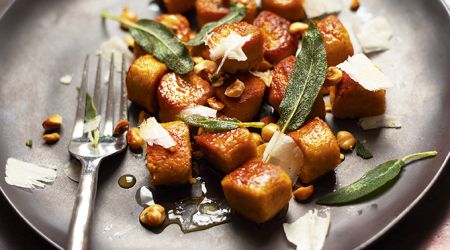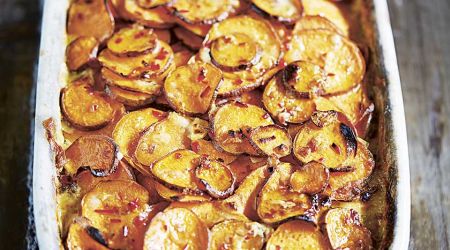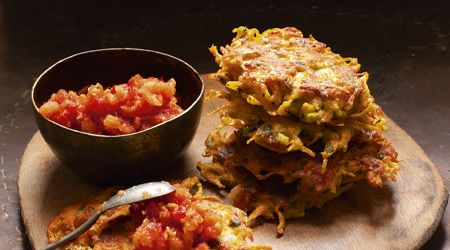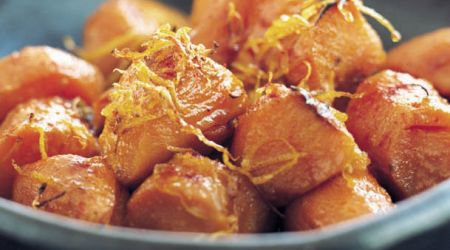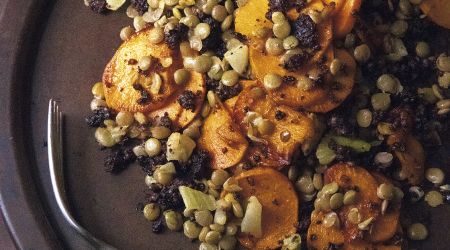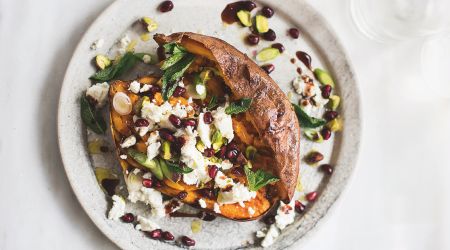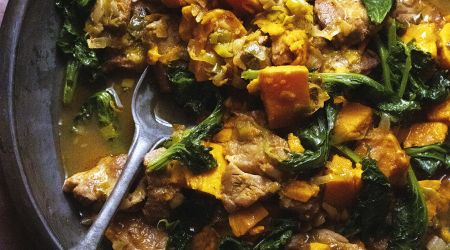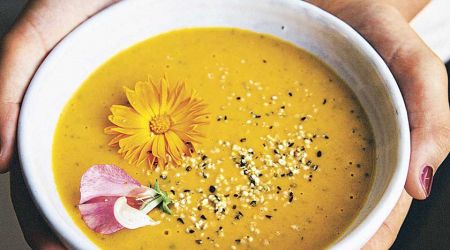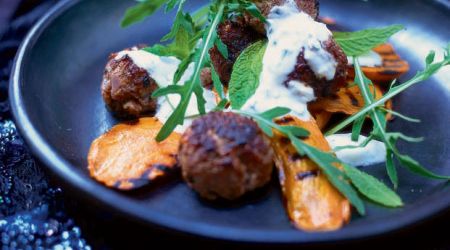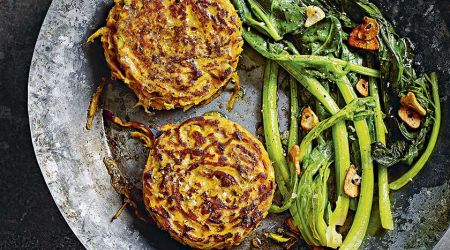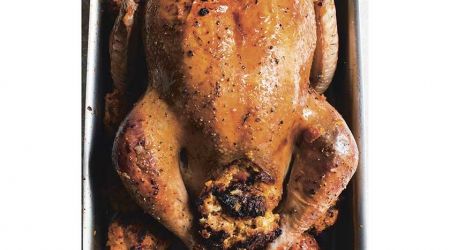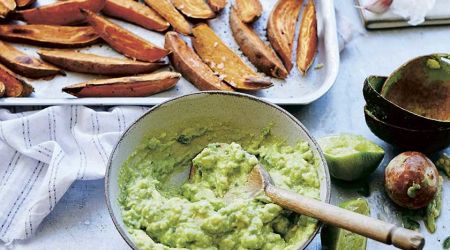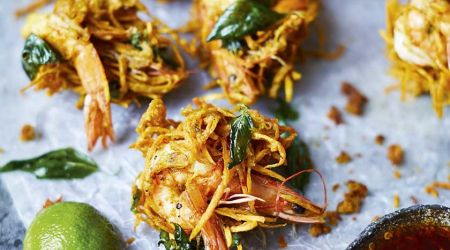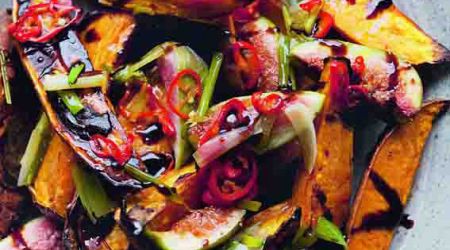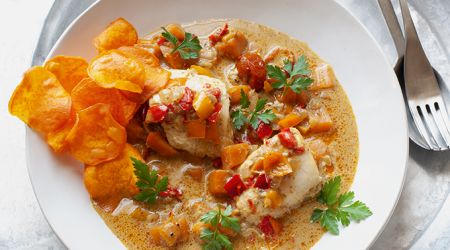Sweet potatoes
As at home on the American Thanksgiving table as they are in a nourishing English pork stew, sweet potatoes are a staple to savour this autumn. Clarissa Hyman digs in
Dazzling with vibrant orange and pink flesh, this starchy root vegetable is at its prime for autumn feasts. The shared name invites the wrong assumption that sweet potatoes are related to the potato, when, in fact, they are not even distantly related. Another common mistake is to confuse them with yams, although the flesh of the latter is not as sweet.
The starchy sweet potato (Ipomoea batatas) is actually a vine from the morning glory family, and was one of the first plants to travel to the Old World with Columbus. Unlike the Andean potato (Solanum tuberosum), in gained immediate popularity. King Ferdinand and Queen Isabella liked them enough to have them planted in their Spanish court gardens, and their son-in-law, Henry VIII of England, is said to have enjoyed them in heavily spiced and sugared pies, in the belief that they were an aphrodisiac.
These ‘venerous roots’, often sold as crystallised slices, were a saucy feature of many a Tudor banqueting table: Shakespeare’s Sir John Falstaff in The Merry Wives of Windsor, thinking about the prospect of future sexual frolics, cries, 'Let the sky rain with potatoes'. The date the play was written makes it clear the reference is to sweet potatoes, not Golden Wonders.
Their origin, however, goes further, both in terms of time and geography. In Peru, the use of sweet potato dates back to at least 2800BC, and perhaps even earlier. The sweet potato is found not only in the New World but also in Polynesia, from Hawaii to New Zealand, where it is a popular Maori staple called kumara. There is speculation that it could have spread from western South America, either deliberately or as a ‘stowaway’ on driftwood. Another theory is that the sweet potato, post-Columbus, was taken from Spain ever further eastwards. Arriving in China in the 16th century, they quickly conquered palates sufficiently to be widely sold boiled and roasted by vendors in Peking.
Sweet potatoes have since become a staple carbohydrate food source all over the world and are now widely cultivated throughout the tropics and in warm, temperate regions. There are many varieties, with varying skin and flesh colour. The best tubers are firm, fat and unblemished, and should feel heavy for their size – the world’s heaviest weighed in at 37kg and was grown in 2004 on the island of Lanzarote.
Their inherent sweetness was always prized: Spanish historian and navigator Fernández de Oviedo wrote, ‘A batata well cured and well prepared is just like fine marzipan’, and described them as ‘a singular and precious fruit’. One contemporary recipe said that when roasted they will taste ‘as if they had been dipped in a jar of jam, they will be so honey-sweet’.
Early records from travellers and explorers in the New World described sweet potatoes as roasted or boiled roots that tasted like chestnuts. It is still a description that holds true, and their nutty, buttery flavour and soft, mealy texture belies their irregular and elongated skin, which can be purple-red, yellow or white. The inner flesh can also vary from cream to purple to traffic-light orange – choose the latter for the best sweet flavour and moist, creamy texture, although those with white or pale-yellow flesh have a drier, firmer texture that results in a pleasingly fluffy texture when mashed or baked.
Tom Kerridge includes them in a chicken tagine traybake, Andy Oliver serves pork carnitas with sweet potato fries and Atul Kochhar uses them in a fabulous sweet potato and chickpea curry. The tubers are a staple in the southern US, where they are often simply called potatoes, as opposed to the ‘Irish’ potato. Throughout the States, however, glazed or candied sweet potatoes are as much a part of American Thanksgiving dinners as turkey and cranberry sauce. Baked with butter, brown sugar or maple syrup, they are more a rich, sticky relish than vegetable side dish. Curiously, the sweet potato is little used in Mexican cooking, apart from a soft candy made in Puebla city, called ‘camotes de Santa Clara’.
Puréed, orange-fleshed sweet potatoes are widely used in cakes, breads and muffins, as well as in pies, puddings and custards. Dried or candied slices are also popular in many parts of the world. The classic sweet potato pie is similar to pumpkin pie, and cookery writer Jane Grigson describes a traditional Portuguese dish of sweet potatoes with egg yolks, cinnamon and cream as ‘exquisite, delicate and delicious’. It’s a direct line back to 1589, when a discriminating gentleman called Richard Hakluyt wrote, ‘These potatoes be the most delicate rootes that may be eaten, and doe farre exceed our passeneps or carets’. Sweet potatoes, indee.
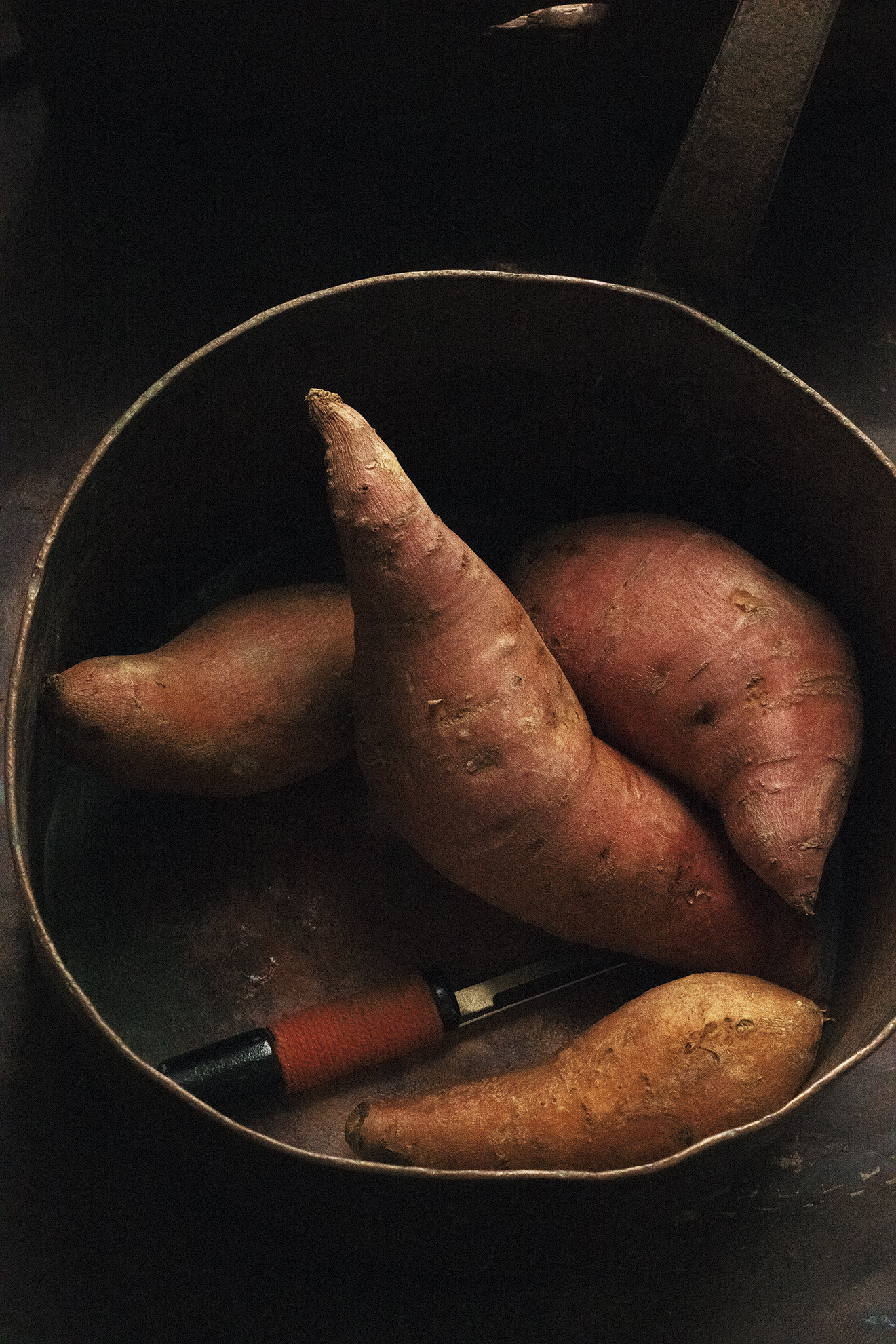
Recipes
Get Premium access to all the latest content online
Subscribe and view full print editions online... Subscribe

